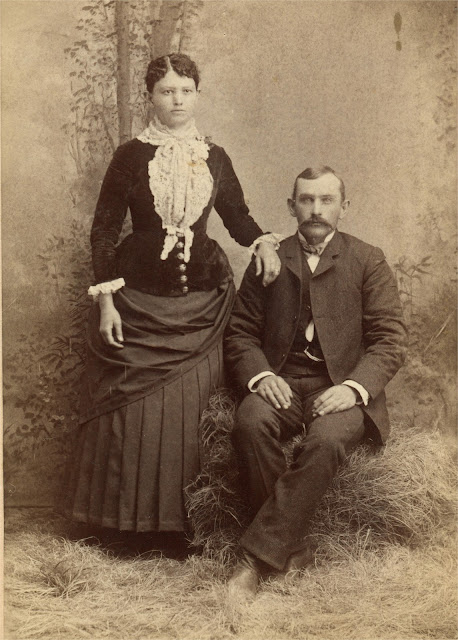Below are three photo postcards showing exhibits from the Dinuba Citrus Fair, and one from the San Bernardino National Orange Show:
This Visalia exhibit at Dinuba's Citrus Fair apparently had a model of a circus elephant (with an electric sign) as its centerpiece.
The Dinuba Citrus Fair started in 1903. All three of these citrus fair photos have the "Bewas Reedley" photographer's mark, this would mean that these pictures were taken between 1904 & 1911.
Bewas studio marks were not used after 1911 because photographer
George Besaw worked under the
Mitchell Postcard Company after that date (He became the manager and chief photographer for that company).
Dinuba's exhibit at the Dinuba Citrus Fair.
Orosi's exhibit in Dinuba
(Added 11/17/14) Porterville's exhibit at the Dinuba Citrus Fair.
This is a photo postcard of the Lindsay CA entry at the Sixth Annual San Bernardino National Orange Show (1916). The people in the photograph look rather bored, or perhaps tired.
(Update 11/7/16) According to
Sarah Troop, the man in this photograph is "T. E. Anderson" (Thomas Espy Anderson); who opened a packinghouse in Lindsay and established the
TEA Fancy citrus label. The little girl is his daughter, Pearl Elizabeth Anderson. You can see Pearl in the image below, holding the trophy cup.
(Added: 11/11/12): Here's another view of Lindsay's exhibit at San Bernardino's 1916 orange show. The fruit display in the previous photo appears to be behind the lower two horses (You can just barely see the "
L" of "
Lindsay" between the horses' heads). The group of people pictured here have a small "Lindsay" banner and a "Tulare Co" sign above them. And if you look closely at this group, I believe you can pick out the four individuals who are in the previous photograph.
(Added 5/25/14) Circa 1913. A Lindsay-Strathmore District display from an earlier San Bernardino National Orange Show. It looks like these could be the same horses used later in the 1916 show.











.jpg)

